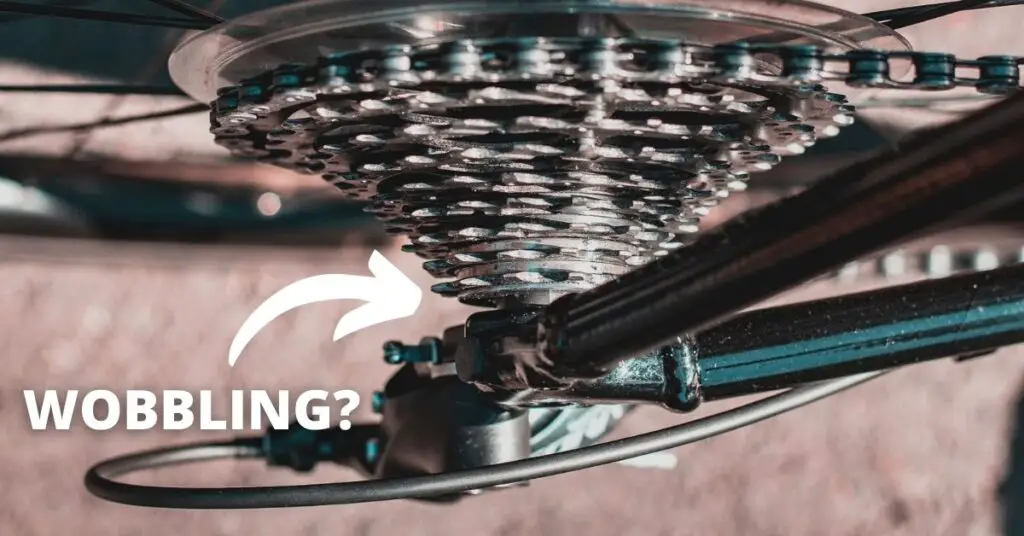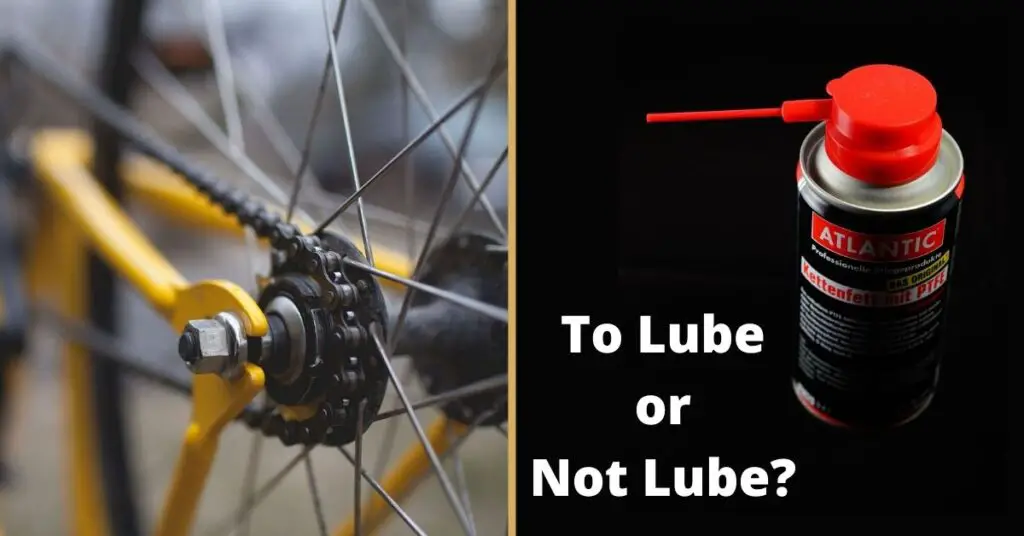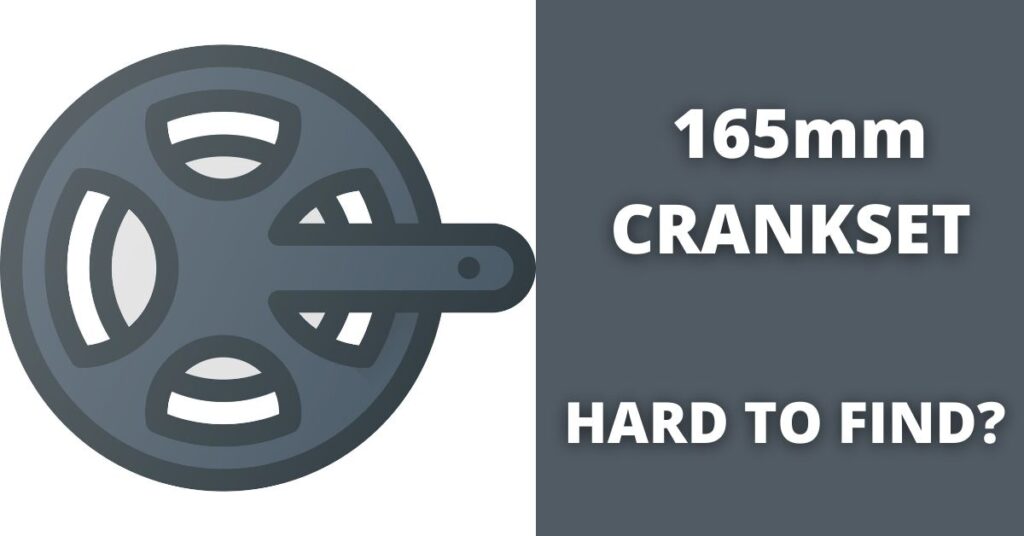As a bike rider, the term “wobbling” is not a strange term to you when it comes to cassettes and wheels.
Bike wheels and cassettes need to be properly trued when being installed to make your bike function well but sometimes you can’t just stop your wheel or cassette from wobbling no matter how much you try to true it.
In this article, we’ll be talking about the wobbling of wheels and cassettes. Should they wobble? How much wobbling is allowed? what causes the wobbling? And, how it can be fixed?

Should My Rear Cassette Wobble?
Your rear cassette is not supposed to wobble if it is properly installed and the rear wheel is trued but a little wobbling isn’t uncommon in cassettes.
Some bike cassettes wobble while some do not and most times how you installed it isn’t the problem but who manufactured it. Most Shimano cassettes are known to wobble and this doesn’t hinder their functions nor do they wear out faster because of this.
Wobbling is more noticeable when you’re freewheeling or backpedaling but apart from the noises that it makes, these cassettes work perfectly fine.
A rear bike cassette could also wobble because there are issues with it. Discovering those issues fast and fixing them is advisable if you want to continue having worry-free rides.
In the course of the article, we’ll be guiding you on how to discover these problems and how you can fix them.
How Do I Know If My Cassette Is Loose?
A loose cassette can make steering and handling difficult which is why it must be detected and fixed on time.
These are some of the ways to detect this:
1- Rattling Sounds
If your cassette makes rattling sounds that are loud and annoying, then it is loose. This comes from the cogs jumping around and making loud and metallic sounds that grate the ears.
You should remove the cassette, clean it, check for wear and then reinstall it correctly.
2- Poor Shifting
When you notice that your bike, all of a sudden, has started to shift poorly, then your cassette has probably become loose. Check the cassette in this case.
This poor shifting is a result of the cogs moving out of position and jumping around. Your bike chain will find it difficult to land correctly on the sprockets when you shift. This may be because the lockring on the cassette has come loose.
Remove the cassette, reinstall and tighten the lockring well.
3- Wobbling
Apart from the sounds that could indicate that your cassette is loose, you could also discover that your cassette is loose by the feel it gives.
A loose cassette will have an extreme play, wobbling around, making it difficult for you to steer properly. Even if you don’t hear rattling sounds, once you discover your cassette wobbles excessively, know that it’s time to tighten it.
What Causes a Rear Bike Wheel to Wobble?
Your rear bike wheel is supposed to stand straight and true, though a 100% true is almost impossible. Your rear wheel could however wobble in a way that causes concern, making it almost impossible for you to ride safely.
This could be caused by several things:
1- Wheel Spokes
The spokes on your wheel connect the rim to the wheel hub and evenly bear the weight your rear wheel carries.
Sometimes one or more of these spokes may become loose or break. When this happens, your bike rear wheel wobbles.
Your bike rear wheel could also wobble if the spokes on one side are tightened more than those on the other side. This causes unequal tension in the spokes, making your rear wheel wobble. It causes wobbling at the 0° and 180° points of the rear wheel.
If you continue riding with this, your rim could collapse unexpectedly.
2- Bent / Broken Axle
Axles keep your rear wheel attached to your bike. When your wheel bearings fail, your axle loses support and could bend or break inside the hub.
Broken axles are common with freewheels and they make the rear wheels wobble.
When this happens, your bearings and axles would need to be changed. You would need a quick-release skewer to accomplish this.
3- Tires
Your rear wheel could also be wobbling because of the tires. If your tire isn’t properly sitting on the tire bead of the rim, it could cause your wheel to wobble.
You can correct this by deflating the tire, lubricating the tire bead, and inflating it until the bead pops onto the rim.
When the tire is correctly popped into place, you will hear a “ping” sound. This should solve the problem of wobbling.
You should also make sure that the tires don’t have a bulge, tear or wear. This could also cause your wheel to wobble.
4- Bent Rims
A lot of wobbling wheels are caused by bent rims. Your rim could become bent if you hit potholes, hit your wheel against something hard, or if one or more of your spokes break.
This will make your rim hit your brake pad repeatedly, making your wheel wobble. Your tire would often deflate if you have bent rims too.
After discovering a bent rim, you should replace the broken spokes immediately and true the rims.
A play in the hubs can also cause your wheel to wobble. So while checking for dents and bend in your rim, check for excessive play in the hubs too.
How Do You Fix a Wobbling Cassette?
To fix a wobbling cassette, you must first know what is causing the wobbling. When you know this, fixing it is less difficult and can be done in a few minutes.
Let’s take a look at some of the causes of wobbling and how they can be fixed.
1- LOOSE LOCKRING
If the wobbling is caused by a loose lockring then you need to unscrew the lockring and tighten it again.
You’ll need a chain whip, a lockring remover, and a crescent wrench.
STEP 1: Remove your rear wheel and place it on a workbench.
STEP 2: Use the chain whip to hold the cassette in place by wrapping it around one of the larger cogs.
STEP 2: Insert a lockring remover into your lockring and use a crescent wrench to turn it anti-clockwise to remove the lockring.
STEP 4: After unscrewing it, insert it again and torque it correctly. Make sure the lockring is properly tightened and this should fix the wobbling.
2- PLAY IN THE HUB
If the wobbling is caused by a play in the hub then your hub needs to be tightened or replaced.
If the hub play is caused by wear then change the hub.
If it’s just a case of incorrect fitting, then tighten the hub. You would need to remove your cassette to do this. After unscrewing the lockring, your cassette would come off easily and you would be able to tighten your hub.
3- INCORRECT SPACING / MISSING SPACERS
You can also fix your wobbling cassette by adding spacers or correctly using your spacers. A wobbling cassette can be caused by missing spacers or incorrect spacing.
You especially need spacers when your cassette speed is less than your hub speed. For example, if you’re fitting an 8-speed cassette on a 10-speed hub.
You would have to remove your cassette and pay attention to the spacers when reinstalling it. If you use the spacers correctly, the wobble in the cassette would stop.
Should You Worry If Your Cassette Wobbles?
It is normal for a rear cassette to wobble a bit as it is almost impossible to get trued perfectly. You should however worry if the wobbling affects your shifting, steering, or braking.
Can You Tighten a Cassette without a Tool?
Yes, you can. To tighten your cassette, you’re supposed to use a chain whip and a torque wrench but there are ways to get around this.
These are great alternatives but you could end up damaging your cassette or you may find it difficult to get a perfect torque. It is better to tighten your cassette with the correct tool which is a torque wrench.
But anyways, if you decide to give them a try then here they are:
The Old Chain Method
Instead of a chain whip, you can use an old chain.
Wrap the chain around one of the larger cogs in your cassette and place a foot on the other end of the chain on the floor. This will keep your cassette in place and prevent it from spinning.
The Screwdriver Method
Instead of a torque wrench, you can use a screwdriver. Get a flathead screwdriver and put it in your lockring. Use a hammer to give it soft hits until it is right enough.
You can also use plumber pliers. Use the pliers to hold the ring and turn it clockwise. You would need a great deal of strength for this. Keep turning the ring until you’re sure it’s very tight.
Can You over-Tighten a Cassette?
Yes, you can over-tighten a cassette. How much you can tighten your cassette lockring is measured by newton meters and going above that can over tighten your cassette. This is why you should always use a torque wrench to tighten your cassette so that you can get the right “tightness”.
If you over-tighten your cassette lockring, the threads could shred or it would become impossible to remove your cassette from your freehub when you want to clean or replace it. Overtightening your cassette can also cause damage to your hub.
Always check the newton meters required for your lockring and torque it to that exact number. It is usually between 40Nm and 50Nm.
Final Thoughts!
A wheel or cassette that is perfectly trued is rare but excess wobbling is dangerous and should be fixed immediately.
We have discussed several ways of detecting a loose cassette and how to fix them. This is to ensure that you keep having safe and pleasant rides.
You should also avoid over-tightening your cassette and use proper tools when removing or installing them.
Cheers!




